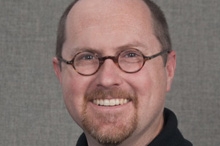

Brian Walsh is being honored as a Connected Educator Champion of Change.
Washington State spends on average $32,000 per year to incarcerate one offender. Reducing the recidivism rate- the number of offenders who return to prison after release- is a vital part of correctional public policy.
Correctional education is one of the most effective tools to lower the recidivism rate. A recent meta-analysis by RAND found that offenders who participated in education programs while incarcerated were 43% less likely to return to prison and 13% more likely to become employed. The Washington State Institute for Public Policy has found that adult basic education, post-secondary education, and vocational education programs, have a net return to taxpayers and society of at least $13 per $1 spent. Prison education programs help offenders prepare for reentry and are effective tools in reducing future crime.
As director of correctional education programs at Peninsula College, I lead our community college’s efforts to prepare offender students to be successful workers and citizens when they are released. For over 30 years our college has partnered with the Washington State Department of Corrections to create meaningful programs in high-demand occupations. Washington State community colleges have been innovative partners for change in corrections education by providing access to quality adult, post-secondary, and vocational education that is responsive to workplace demands. However, as society has become more interconnected through the Internet and as technology has changed education, corrections education has struggled to adapt.
For reasons of public safety and institutional security, most states do not allow adult offenders to have access to the Internet’s readily available resources. My faculty and I have worked to replicate those resources by collaborating with agencies that provide open educational materials to the public. We have created our own disconnected Internet that includes Khan Academy Lite, an offline version of Khan Academy; courses from the National Repository of Open Resources; and the Correctional Offline Educational Platform, a webserver providing offline access to thousands of important websites. Our faculty is able to recreate the hybrid classroom of the modern community college by combining both face to face and online instruction. Our ultimate goal is to offer a flipped classroom through low-cost tablets that would take advantage of the time that offenders have, while reducing costs through the use of open textbooks and open educational resources. By finding ways to use technology safely within the prison we believe we can more effectively prepare offenders for release at a lower cost to tax payers.
I like to tell people that we have some of the best students imaginable. They do all their homework, even the questions that aren’t assigned. They don’t interrupt class with their cell phone. They come to class wanting to be there and knowing that it is the best opportunity they have in prison for a quiet, meaningful way to serve their sentence. But our students have committed some of the worst crimes imaginable. And unlike the teacher who looks forward to visits from their former students, we do not. Our hope is that by changing how technology is used in prison classrooms, our students will never come back.
Brian Walsh, Director of Corrections Education, leads the offender education program for Peninsula College at two state prisons in the northwest corner of Washington State’s Olympic Peninsula.


